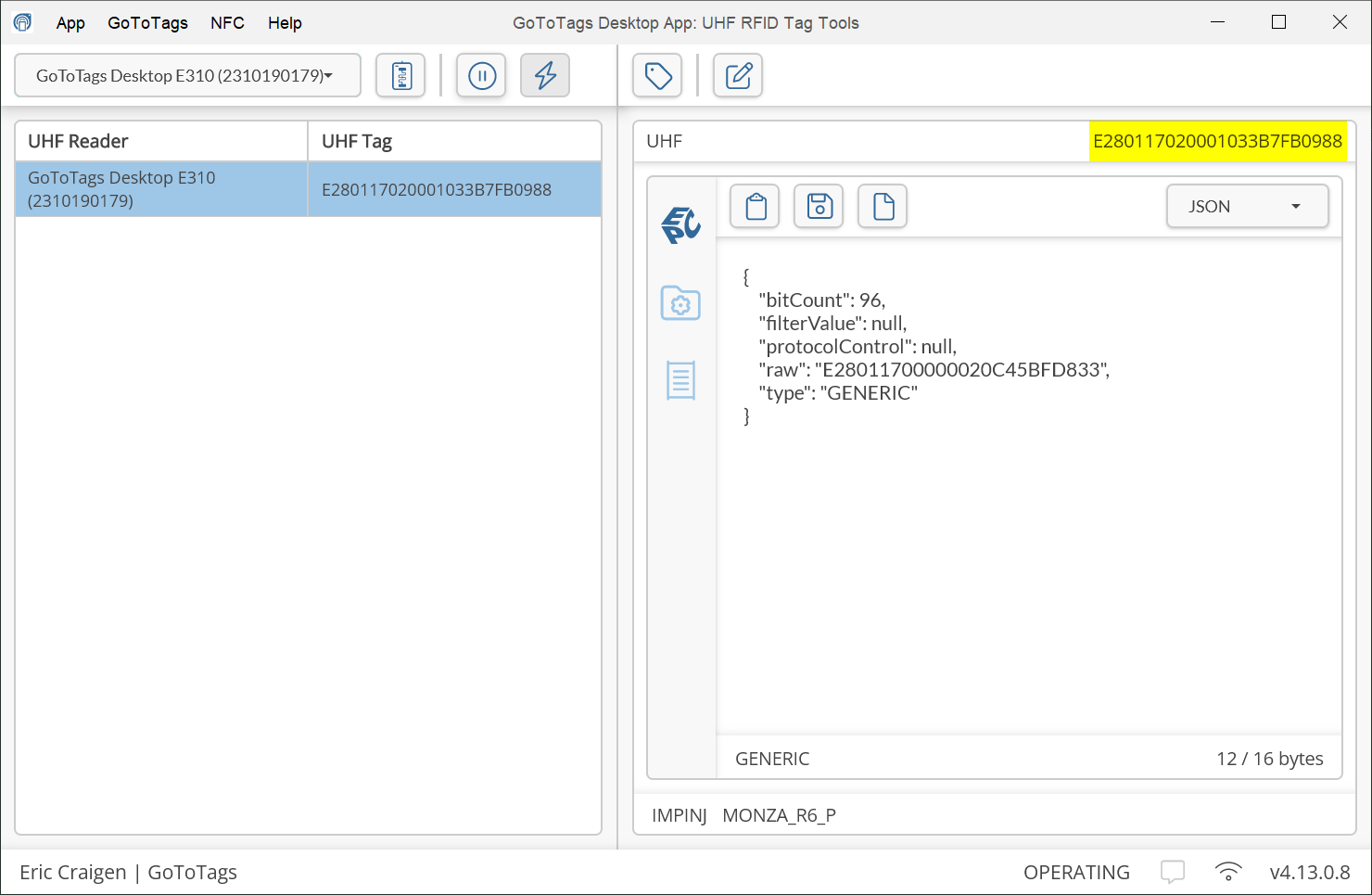UHF RFID Chip TID
The UHF RFID Chip TID is a manufacturer supplied, read-only tag identifier potentially used to uniquely identify an UHF RFID tag in a project’s software systems. The TID can be formatted as a Short TID or an Extended TID (XTID). Most common UHF RFID chips that conform to the GS1 EPC Gen 2 Tag Data Standard (TDS) come preset with an XTID that contains a unique serial number to also uniquely identify the UHF RFID chip.
Example UHF RFID Tag Short TID: E2806995
Example UHF RFID Tag Extended TID: E28069952000500101D589CC
Contents
UHF RFID Chip Short TID
A Short TID resides in the TID memory bank and is comprised of the following:
- A 1 byte ISO 15693 class identifier (E2h)
- An XTID indicator bit; determines if a tag implements Extended Tag Identification
- A security indicator bit; determines if a tag supports the Authenticate and/or Challenge commands
- A file indicator bit; determines if a tag supports the FileOpen command
- A 9 bit Mask-Designer ID
- A 9 bit Tag Model Number (Chip Type)
These elements together occupy 4 bytes of UHF RFID tag memory. According to the GS1 TDS 2.0 standard., this configuration represents the basic requirement for any TID memory bank.
UHF RFID Chip Extended TID
The Extended Tag Identification (XTID) is used to extend the tag’s identification capabilities and support advanced functionality. It is comprised of the following:
- XTID Header; identifies the format and version of the XTID, providing a structure for the remaining segments
- Serial Number; contains a unique serial number assigned to the tag, ensuring global uniqueness
- Optional Command Support; optional segment indicates which additional commands the tag supports beyond the baseline capabilities
- BlockWrite and BlockErase; defines areas in the tag’s memory that can be written to or erased in blocks, allowing for efficient data management
- User Memory and BlockPermaLock; used for user data storage and to permanently lock blocks of memory to prevent rewriting or erasing.
Each segment in the XTID memory bank is critical for defining the tag’s capabilities and identity in the UHF RFID system per the GS1 TDS 2.0 standard.
UHF RFID Chip Mask Designer Identifier
Every manufacturer of UHF RFID chips is assigned a Mask Designer Identifier (MDID) per the GS1 EPC Gen 2 Tag Data Standard; this code is included in the UHF RFID chip TID to allow software systems to determine the manufacturer of the UFH RFID chip and help in the process of UHF RFID chip type identification. The location of the manufacturers code in the TID is always 9 bits, spread across the second and third byte of the TID memory bank.
| Manufacturer | Code |
|---|---|
| Alien Technology | 803h |
| EM Microelectronic | 80Bh |
| Impinj | 801h |
| NXP Semiconductors | 806h |
| STMicroelectronics | 807h |
UHF RFID Chip Tag Model Code (Chip Type)
Every UHF RFID chip contains a Tag Model Number (TMN) that identifies the specific UHF RFID chip type, is assigned by the manufacturer and must uniquely correspond to the tag’s capabilities and custom commands. If two UHF RFID tags have differing features or commands, they require distinct MDID/TMN combinations to ensure global uniqueness, even if the extended TID is not used.
| UHF CHIP | Code |
|---|---|
| EM4425 V12 | 110h |
| Impinj M730 | 191h |
| Impinj M750 | 190h |
| Impinj Monza R6 | 160h |
| Impinj Monza R6 P | 170h |
| NXP UCODE 7 | 810h |
| NXP UCODE 8 | 894h |
| NXP UCODE 8m | 994h |
| NXP UCODE 9 | 995h |




